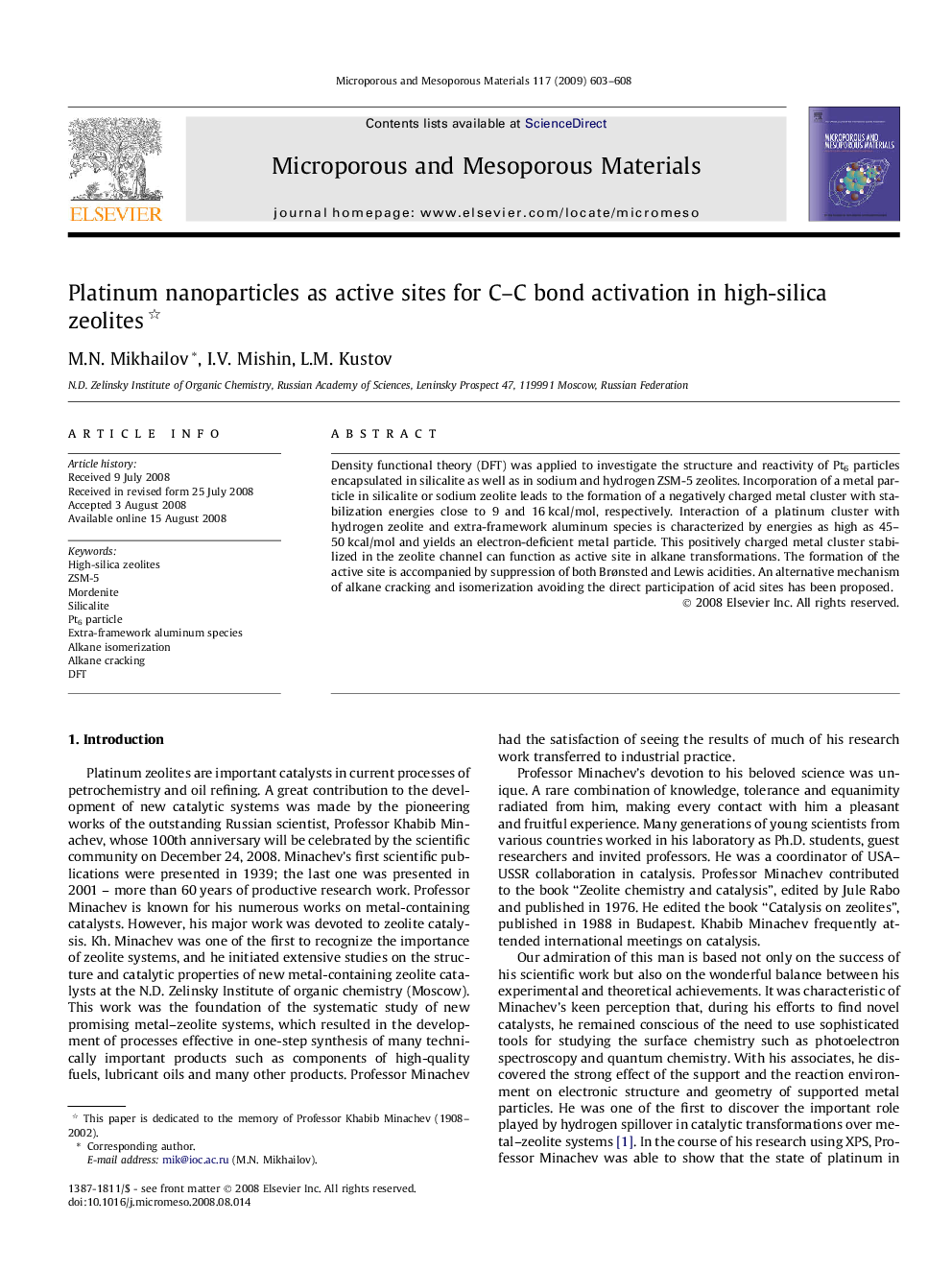| Article ID | Journal | Published Year | Pages | File Type |
|---|---|---|---|---|
| 76603 | Microporous and Mesoporous Materials | 2009 | 6 Pages |
Density functional theory (DFT) was applied to investigate the structure and reactivity of Pt6 particles encapsulated in silicalite as well as in sodium and hydrogen ZSM-5 zeolites. Incorporation of a metal particle in silicalite or sodium zeolite leads to the formation of a negatively charged metal cluster with stabilization energies close to 9 and 16 kcal/mol, respectively. Interaction of a platinum cluster with hydrogen zeolite and extra-framework aluminum species is characterized by energies as high as 45–50 kcal/mol and yields an electron-deficient metal particle. This positively charged metal cluster stabilized in the zeolite channel can function as active site in alkane transformations. The formation of the active site is accompanied by suppression of both Brønsted and Lewis acidities. An alternative mechanism of alkane cracking and isomerization avoiding the direct participation of acid sites has been proposed.
